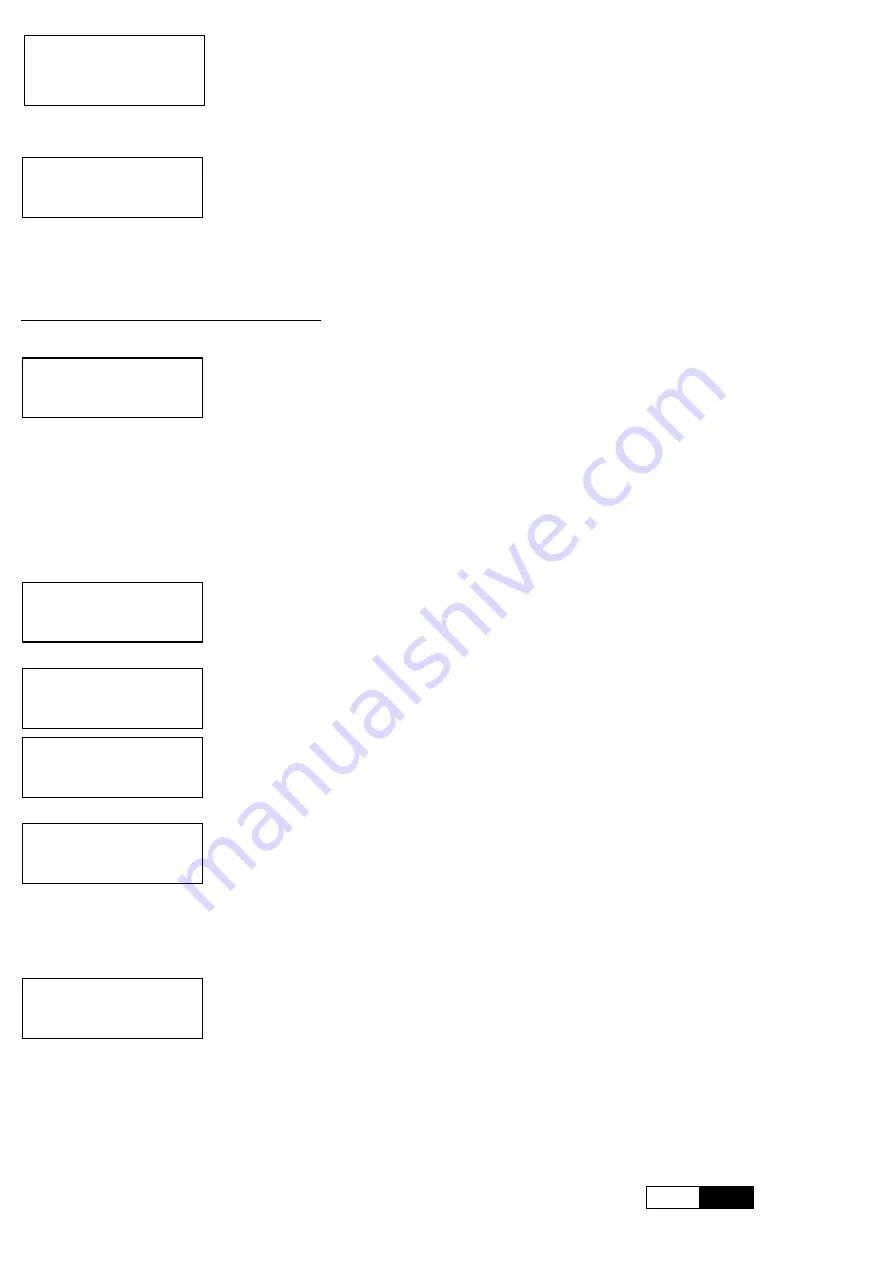
RO
EN
37
2.5 - Multiple mode activation:
set this parameter to OFF to disable Nettuno for multiple mode operation
with several inverters. In this case the device, though powered, is not involved in multiple mode operation
and therefore does not become a master device or intervene as a partner device. However, if no master is
present for 15 seconds, the device starts operating as a new master and takes control of the system. This
function can be used if, on systems with multiple pumps, the user wishes to assign one as a reserve pump,
activated only in the event of a fault of all other inverters. This parameter should be set to OFF also if the user wishes to use the auxiliary
pump function via one of the relays of the I/O board, as this function is not compatible with multiple mode function.
2.6 - Reduced threshold value:
when a partner device is set in operation to assist the master device in
maintaining the set point pressure, the activation frequency is initially reduced to the set value (as a
percentage of the nominal value) in this parameter. In this way, both the partner and master devices can
operate in a balanced way, close to the maximum output point of the pump. When intervention of the
partner device at the reduced threshold value is not sufficient to guarantee the set pressure value, the partner device is then set to operate
at the maximum nominal frequency.
GROUP 3 : INPUT/OUTPUT PARAMETERS
3.0 - Motor control source:
this parameter defines the control source for calculating the motor frequency.
These options are available:
PRES (pressure):
operation proceeds on the basis of the pressure read by the sensor
4-20mA
MAN (manual):
the motor is started up via the keypad of Nettuno and the speed can be adjusted using
the keys “+” and “-“.
0-10V (analogue input):
regulation is based on the signal from the analogue input of the I/O board. The
frequency is calculated considering that 0V corresponds to 0Hz and 10V corresponds to the maximum
motor frequency. When the value calculated by the analogue sensor is below the stop frequency
(parameter 1.3), the pump is stopped.
3.1 - Input of set point 2:
enables the input for the secondary set point. This contact can be set to NO or
NC mode. When this input is switched, the active pressure set point for regulation becomes parameter
0.4.
3.2 - Permissive input:
sets the input for an external permissive. This contact can be set to NO or NC
mode. The pump is only started when the input is in the correct status.
3.3 - Error input:
sets the input for an external error. This contact can be set to NO or NC mode. The
pump is stopped and an error message appears on display when the input changes status. This can be used
for connection of an external float, or flooding sensor.
3.4 - Relay 1 function:
defines the function associated with the output relay 1. The admissible settings
are:
OFF: relay disabled
AL: alarm output; the relay is switched in the event of an error
P.ON: pump ON, the relay is switched when the pump is running
AUX: auxiliary pump; the relay is used for control of an auxiliary pump
3.5 - Relay 2 function:
defines the function associated with the output relay 2. The settings are identical
to those described for parameter 3.4
2.5 Booster
mode funct. ON
2.6 Reduced
freq. Value 80%
3.0 Command
Source PRES
3.1 Set-point 2
input OFF
3.2 Ext.Enable
input OFF
3.2 Ext.Enable
input OFF
3.4 Function
of relay 1 OFF
3.5 Function
of relay 2 OFF







































